Discover how IoT and CRM are reshaping retail by blending tech and strategy to create personalized, frictionless shopping experiences.
As the retail industry evolves, one thing is clear: customer expectations are at an all-time high, and technology is the key to meeting them. Retailers are now leveraging the power of the Internet of Things (IoT) and Customer Relationship Management (CRM) systems to not only meet these expectations but to exceed them. Together, these technologies are enabling retailers to deliver hyper-personalized experiences, streamline inventory management, and gain valuable real-time insights that drive growth and foster loyalty.
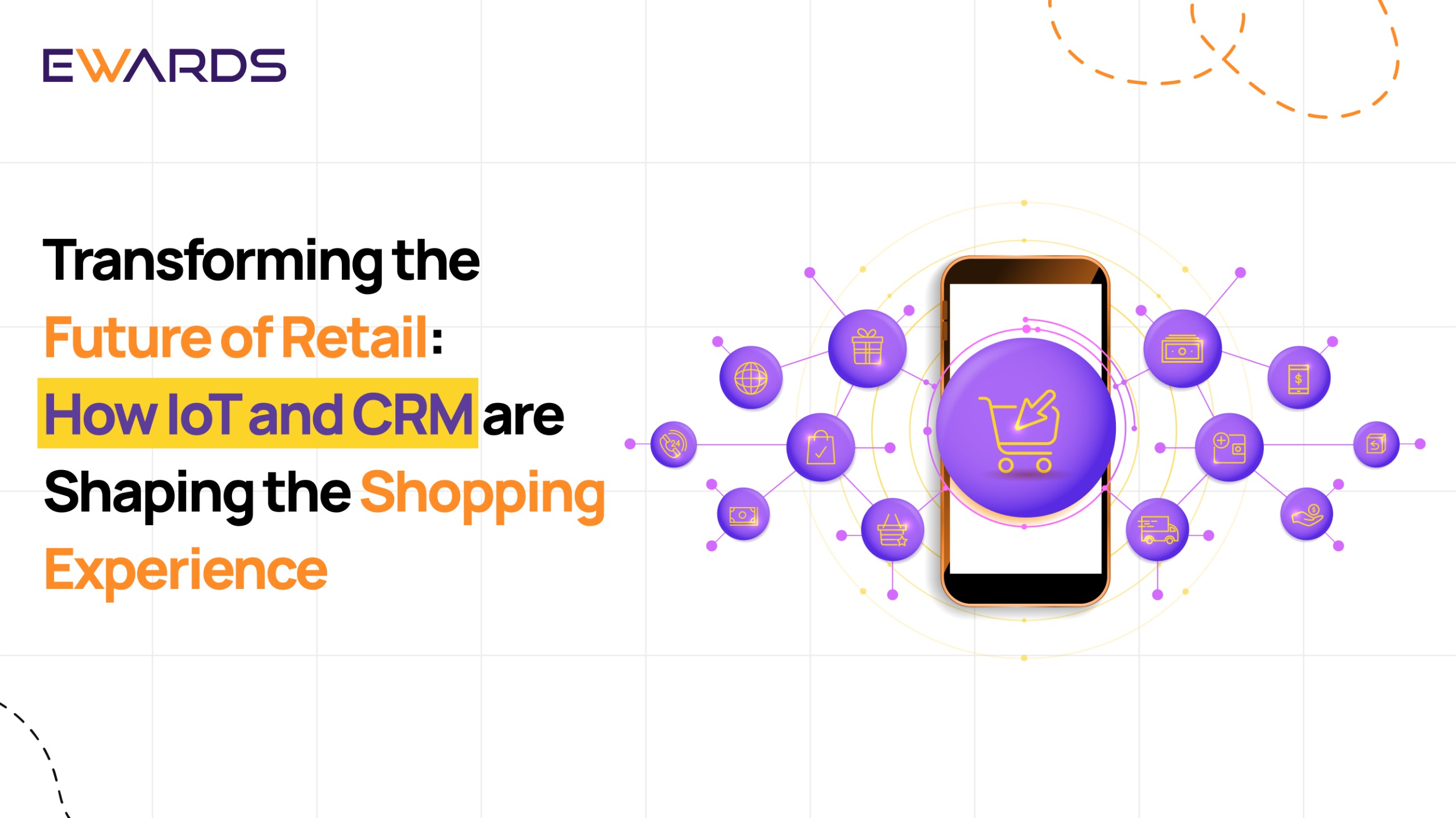
A New Era in Retail: Connecting the Digital and Physical Worlds
The idea of Connected Commerce is transforming the retail landscape by creating a s eamless experience that bridges the gap between in-store, online, and mobile interactions. This technology ecosystem unites customer data from a variety of touchpoints and devices, creating a continuous flow of information that enhances customer engagement and optimizes business operations.
This isn’t just an upgrade in how customers interact with brands; it’s a game-changer for overall business performance. According to McKinsey, companies that harness behavioral data outperform their competitors, experiencing 85% higher sales growth and a 25% improvement in gross margins.
The Impact of IoT in Retail: Powering Efficiency and Engagement
IoT in retail refers to the use of interconnected devices that gather data across the retail environment. These devices ranging from smart shelves to RFID tags help retailers better manage inventory, personalize customer experiences, and streamline operations.
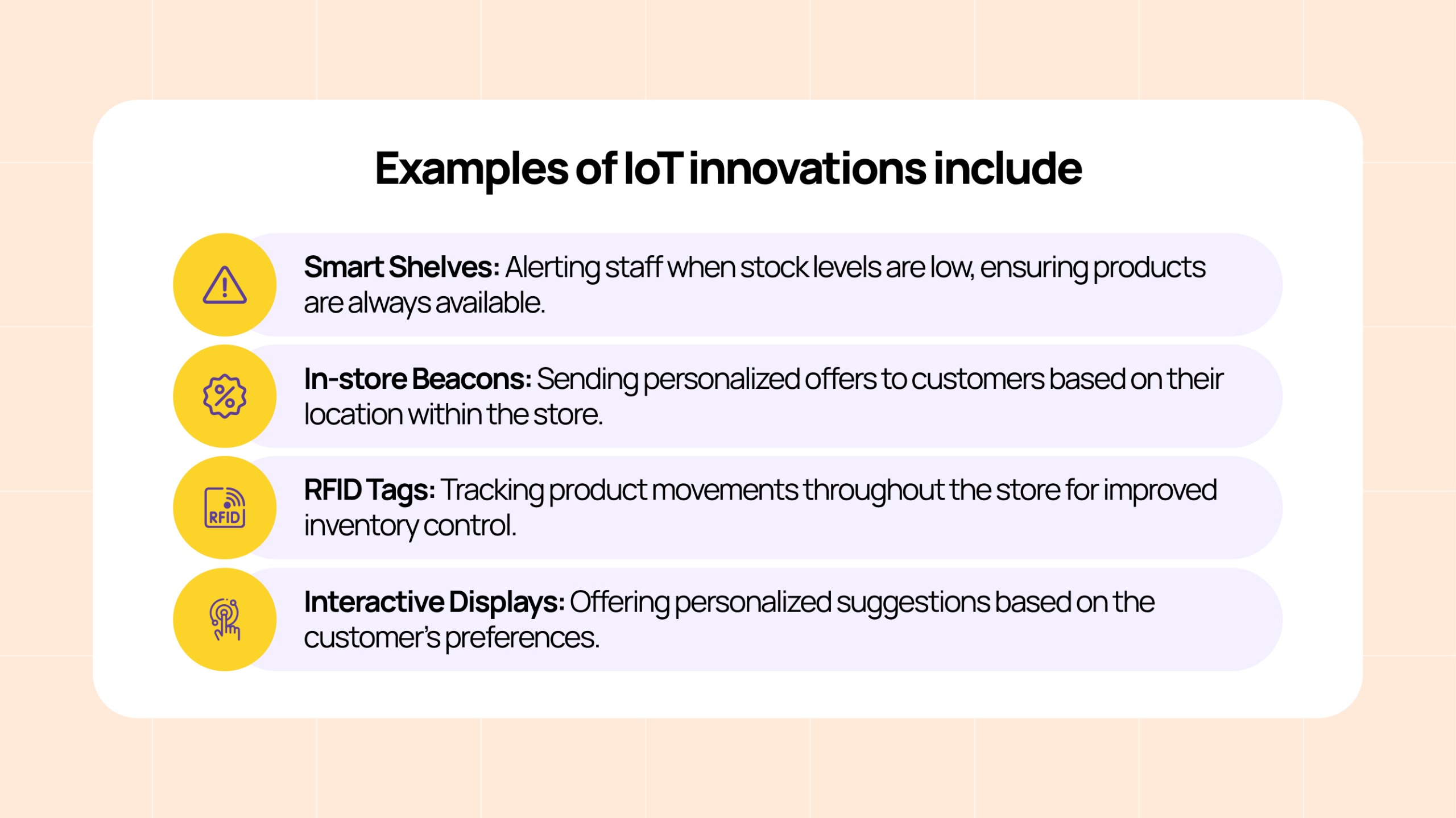
How CRM Complements IoT: The Key to Personalization
CRM systems act as the central hub for all customer data tracking purchasing behavior, service requests, preferences, and digital activity. When paired with IoT, CRM systems become even more powerful, allowing retailers to create truly personalized experiences.
For instance, imagine a customer walking into a store, wearing a smartwatch connected to the retailer’s mobile app. An IoT beacon detects their presence and triggers the CRM system to send a personalized offer on a product they recently browsed online. This instant, tailored interaction bridges the gap between the physical and digital worlds, enhancing the customer journey and boosting conversion rates.
The Tangible Benefits of Connecting IoT and CRM in Retail
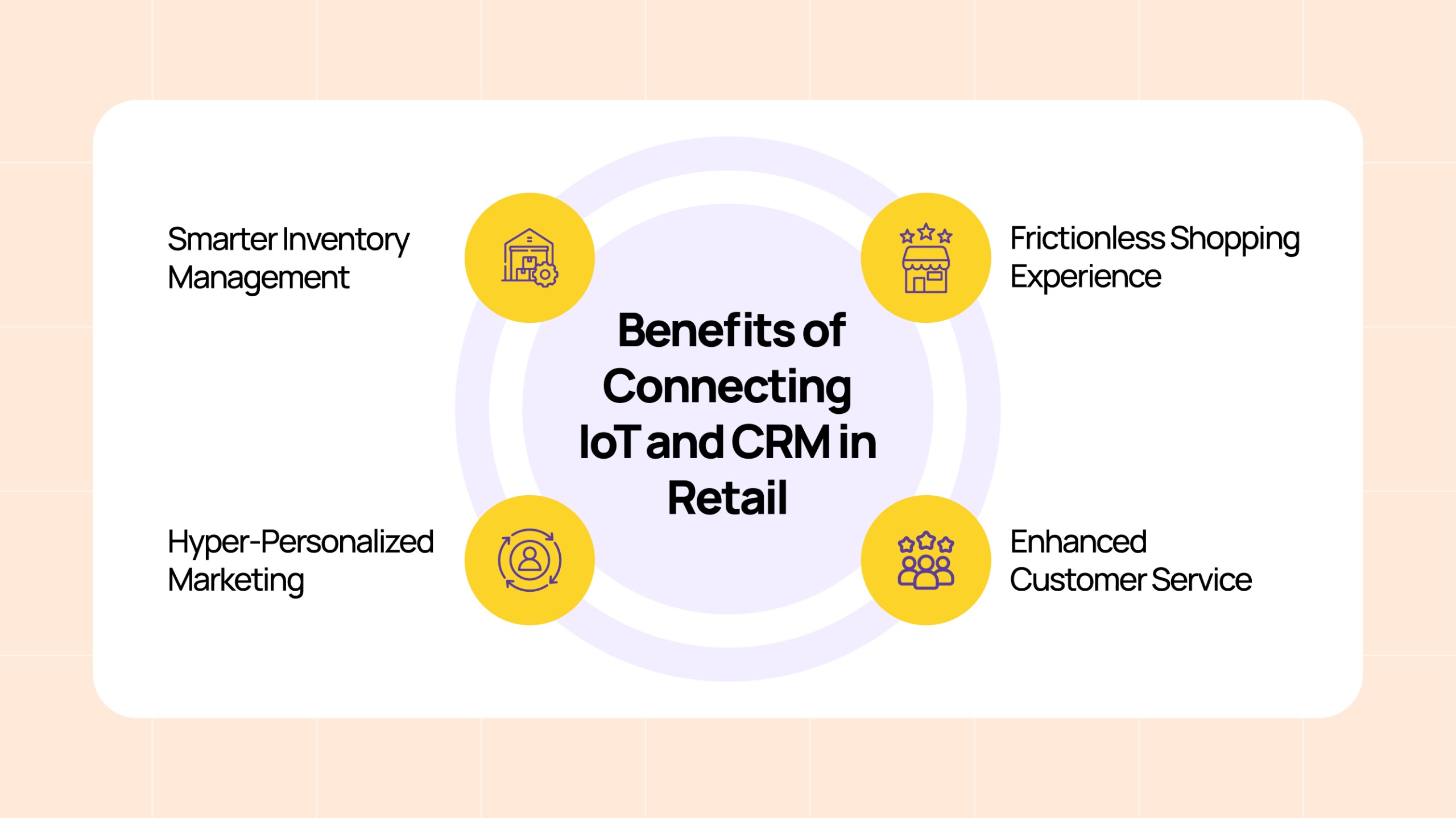
Integrating IoT and CRM systems offers retailers a multitude of advantages:
- Smarter Inventory Management: IoT devices provide real-time updates on stock levels, while CRM data helps predict demand, ensuring that the right products are always available.
- Hyper-Personalized Marketing: By analyzing customer data from multiple touchpoints, retailers can send offers based on individual preferences, location, and past purchases, leading to a more relevant and engaging shopping experience.
- Frictionless Shopping Experience: From self-checkout to personalized alerts, IoT and CRM technologies reduce friction in the shopping journey, providing customers with greater convenience and ease.
- Enhanced Customer Service: Smart devices can notify customer service teams about issues, while CRM data equips them with the context needed to resolve concerns quickly and effectively.
Building a Connected Retail Ecosystem: What’s Needed to Get Started
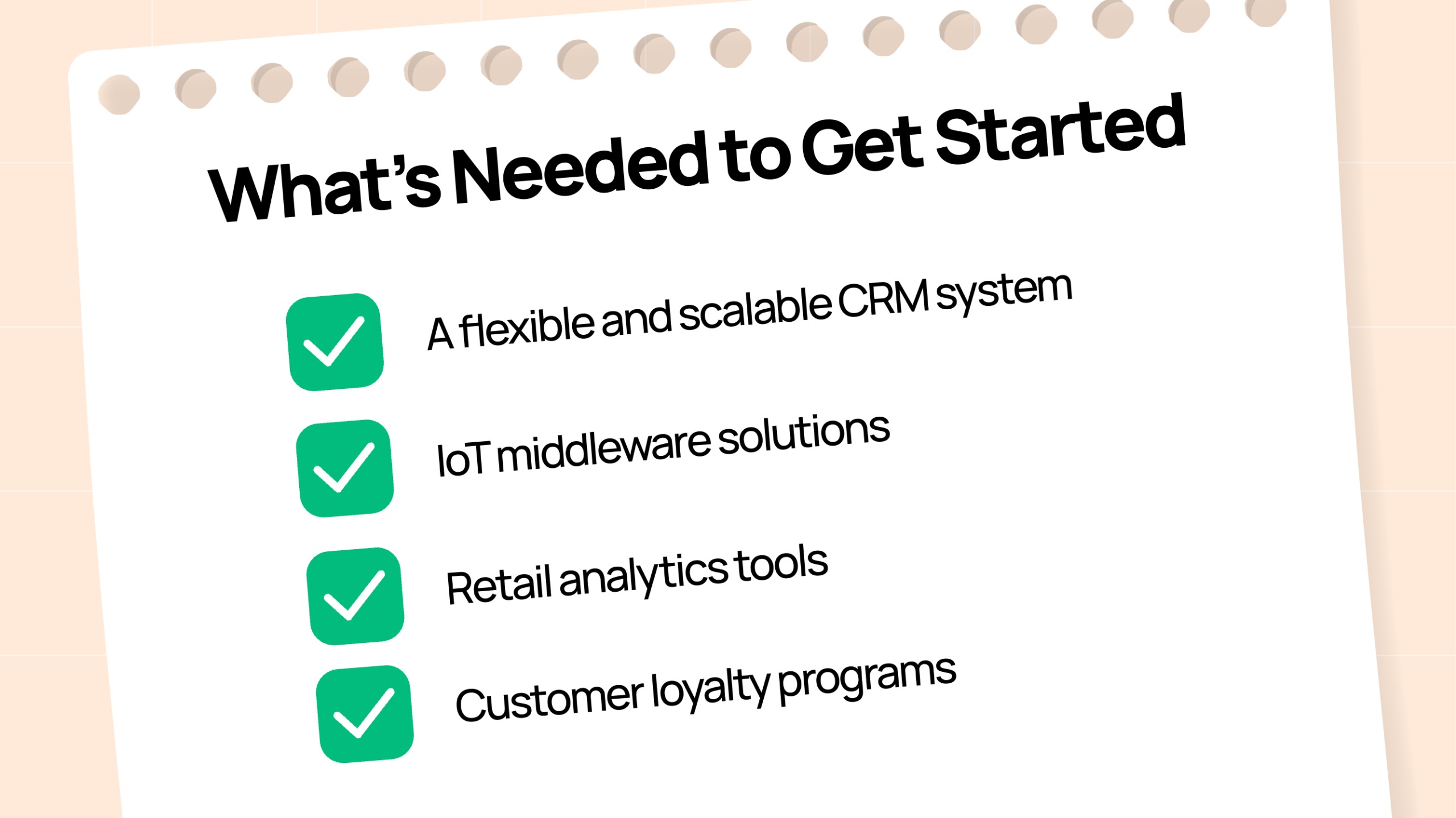
For retailers to fully capitalize on the benefits of Connected Commerce, they need the right infrastructure in place:
- A flexible and scalable CRM system that integrates seamlessly with IoT devices.
- IoT middleware solutions like Azure IoT Hub or AWS IoT Core to connect and manage devices.
- Retail analytics tools to visualize and analyze data trends.
- Customer loyalty programs integrated directly into the CRM to drive repeat business and customer retention.
These components work together to create a connected environment where real-time data is used to drive smarter decision-making.
Looking to the Future: How IoT and CRM Will Shape Retail
The future of retail will continue to evolve with new innovations, such as:
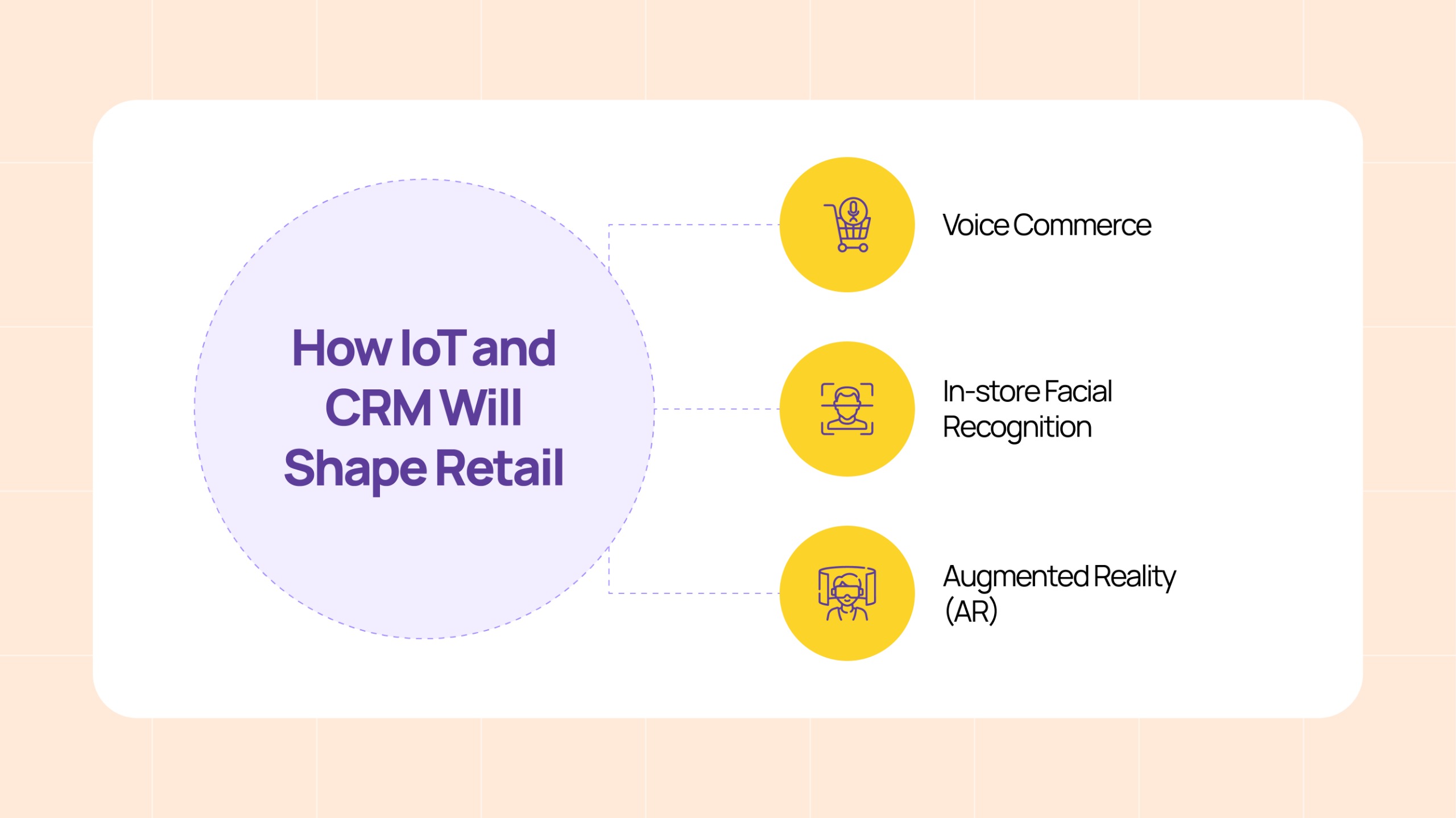
- Voice Commerce: AI-driven voice assistants integrated with CRM systems, enabling voice-activated shopping.
- In-store Facial Recognition: Using CRM data to personalize experiences by recognizing customers as they enter the store.
- Augmented Reality (AR): Apps that provide personalized shopping experiences by guiding customers to products based on their preferences.
As 5G networks and edge computing become more widespread, the potential for IoT in retail will expand, enabling even faster, more predictive interactions. Similarly, CRM systems will become increasingly autonomous, triggering actions in real-time based on data, from inventory management to personalized marketing.
Embracing the Connected Future of Retail
Retailers no longer need to choose between the digital or physical experience. By integrating IoT and CRM systems, they can offer both – faster, smarter, and more connected.
By embracing Connected Commerce, retailers can create personalized, frictionless shopping experiences that enhance customer engagement, streamline operations, and drive sales growth. The future of retail is already here and the brands that successfully merge IoT and CRM will lead the way.
FAQs
1. What is Connected Commerce and why is it important for retailers?
Connected Commerce refers to the integration of digital, in-store, and mobile touchpoints to create a seamless, personalized experience for customers. By connecting customer data across platforms, retailers can enhance engagement, streamline operations, and improve overall business performance, ensuring they meet rising customer expectations.
2. How does IoT enhance the retail experience?
IoT uses interconnected devices such as smart shelves, RFID tags, and in-store beacons to gather real-time data across the store. This helps with inventory management, personalized offers, and tracking product movements, ultimately making the shopping experience more efficient and customer-centric.
3. How do IoT and CRM work together to personalize customer experiences?
When integrated, CRM systems utilize data gathered from IoT devices to deliver hyper-personalized experiences. For example, an IoT beacon can detect a customer’s presence and trigger the CRM system to send tailored offers or promotions based on their recent online interactions, creating a seamless bridge between the digital and physical shopping experience.
4. What infrastructure is needed to implement IoT and CRM in retail?
To fully harness the power of Connected Commerce, retailers need the right infrastructure in place. This includes a flexible and scalable CRM system that can seamlessly integrate with IoT devices to capture and analyze data in real time. IoT middleware solutions, such as Azure IoT Hub or AWS IoT Core, are also essential for connecting and managing the various devices across the store. Retail analytics tools help visualize and analyze data trends, providing actionable insights. Additionally, customer loyalty programs integrated directly into the CRM system can help drive repeat business and improve customer retention, ensuring a cohesive, data-driven ecosystem that optimizes both customer engagement and operational efficiency.